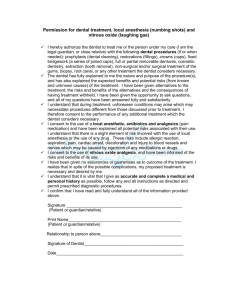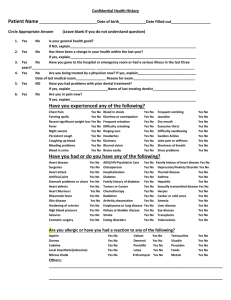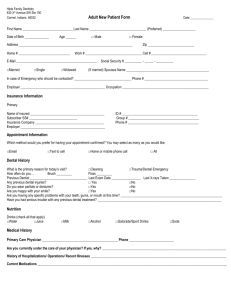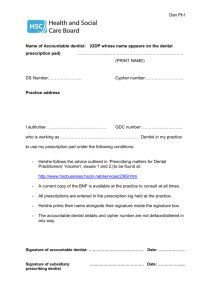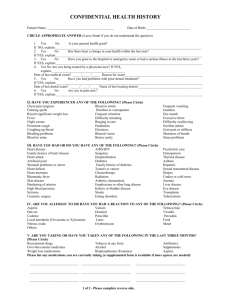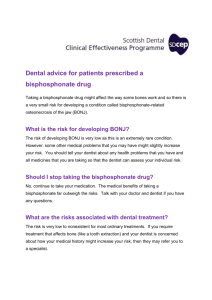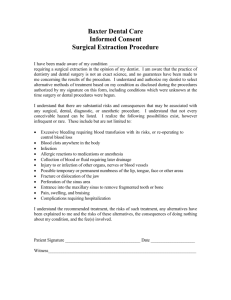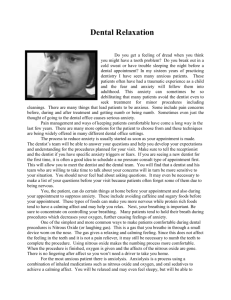Dentistry Patient Management Techniques
advertisement
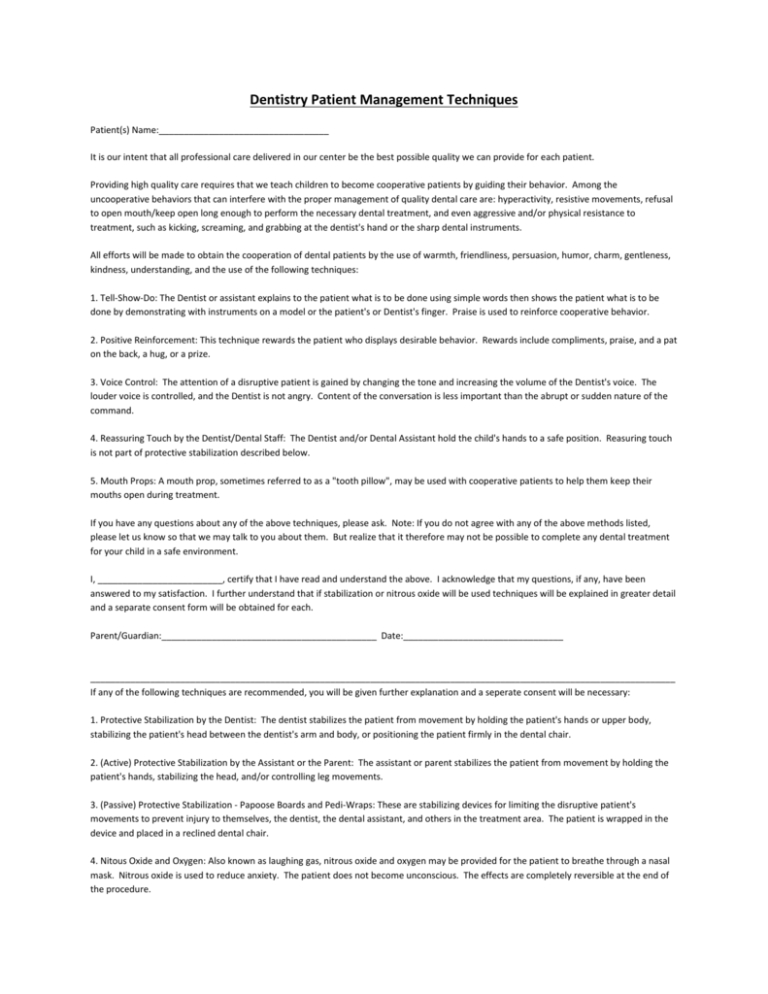
Dentistry Patient Management Techniques Patient(s) Name:__________________________________ It is our intent that all professional care delivered in our center be the best possible quality we can provide for each patient. Providing high quality care requires that we teach children to become cooperative patients by guiding their behavior. Among the uncooperative behaviors that can interfere with the proper management of quality dental care are: hyperactivity, resistive movements, refusal to open mouth/keep open long enough to perform the necessary dental treatment, and even aggressive and/or physical resistance to treatment, such as kicking, screaming, and grabbing at the dentist's hand or the sharp dental instruments. All efforts will be made to obtain the cooperation of dental patients by the use of warmth, friendliness, persuasion, humor, charm, gentleness, kindness, understanding, and the use of the following techniques: 1. Tell-Show-Do: The Dentist or assistant explains to the patient what is to be done using simple words then shows the patient what is to be done by demonstrating with instruments on a model or the patient's or Dentist's finger. Praise is used to reinforce cooperative behavior. 2. Positive Reinforcement: This technique rewards the patient who displays desirable behavior. Rewards include compliments, praise, and a pat on the back, a hug, or a prize. 3. Voice Control: The attention of a disruptive patient is gained by changing the tone and increasing the volume of the Dentist's voice. The louder voice is controlled, and the Dentist is not angry. Content of the conversation is less important than the abrupt or sudden nature of the command. 4. Reassuring Touch by the Dentist/Dental Staff: The Dentist and/or Dental Assistant hold the child's hands to a safe position. Reasuring touch is not part of protective stabilization described below. 5. Mouth Props: A mouth prop, sometimes referred to as a "tooth pillow", may be used with cooperative patients to help them keep their mouths open during treatment. If you have any questions about any of the above techniques, please ask. Note: If you do not agree with any of the above methods listed, please let us know so that we may talk to you about them. But realize that it therefore may not be possible to complete any dental treatment for your child in a safe environment. I, _________________________, certify that I have read and understand the above. I acknowledge that my questions, if any, have been answered to my satisfaction. I further understand that if stabilization or nitrous oxide will be used techniques will be explained in greater detail and a separate consent form will be obtained for each. Parent/Guardian:___________________________________________ Date:________________________________ _____________________________________________________________________________________________________________________ If any of the following techniques are recommended, you will be given further explanation and a seperate consent will be necessary: 1. Protective Stabilization by the Dentist: The dentist stabilizes the patient from movement by holding the patient's hands or upper body, stabilizing the patient's head between the dentist's arm and body, or positioning the patient firmly in the dental chair. 2. (Active) Protective Stabilization by the Assistant or the Parent: The assistant or parent stabilizes the patient from movement by holding the patient's hands, stabilizing the head, and/or controlling leg movements. 3. (Passive) Protective Stabilization - Papoose Boards and Pedi-Wraps: These are stabilizing devices for limiting the disruptive patient's movements to prevent injury to themselves, the dentist, the dental assistant, and others in the treatment area. The patient is wrapped in the device and placed in a reclined dental chair. 4. Nitous Oxide and Oxygen: Also known as laughing gas, nitrous oxide and oxygen may be provided for the patient to breathe through a nasal mask. Nitrous oxide is used to reduce anxiety. The patient does not become unconscious. The effects are completely reversible at the end of the procedure.
